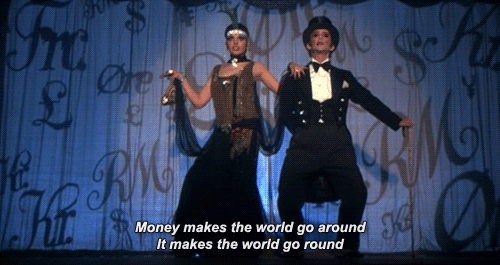Tags
The week away was wonderful, and if it’s the only time we go away this year I won’t be complaining. Staying in Utrecht as opposed to Amsterdam itself was a great idea, not just for the much cheaper accommodation but for the much less overwhelming crowds everywhere. It’s a beautiful city to wander around, with lots to do and without the tourism overload. I also cannot praise Eurostar enough, we had a wonderful experience with them and will definitely use them again for trips to the continent.
We knew that staying in Utrecht but planning on visiting Amsterdam would involve More Trains and I admit we weren’t exactly prepared for what this would entail. My previous European train excursions have all been of the more “turn up and go” style as we have in the UK. Our first clue that The Netherlands would be different came when we got off the Eurostar and tried to get a train on from Amsterdam Centraal. The fact that it was pouring with rain and all trains in the direction we needed were cancelled due to lightning strikes wasn’t the worst of it (in fact that bit was rather cool). We knew we’d be waiting a while due to this force majeure, but when we asked about ramps at the ticket office we were informed by a surly station staff member that station staff and train staff alike had nothing to do with access onto trains and it was all done by a different company, a.k.a. outsourced! We decamped to a bubble tea shop and tried to work out the ramp booking website (there was also an option to call a number, but we were concerned there would be more of a language barrier). The first thing we learned was that they needed at least one hour’s notice, then that we had to choose a specific train, and that we were required to turn up 15 minutes before the train to meet the ramp operator to a specified point on the platform. The system also kept rejecting my British phone number, so we entered a made up Dutch one and crossed our fingers that they didn’t send confirmation by text (they didn’t). Having chosen a train leaving from Amsterdam Amstel, which took a non-struck-by-lightning route to Utrecht, we then made a mad dash across the city crossing many of the beautiful bridges, passing flower stalls, historic buildings, and not noticing any of them because of our time limit. Eventually we found the tram stop we needed, which took us to Amstel station.
(An interlude on trams – wheelchair access on trams is great. Unlike the trains, there is a conductor on board and they are responsible for boarding wheelchair users via a manual ramp attached to the inside of the tram door. The bus we took to a small city farm was also excellent, with a manual ramp and large wheelchair space.)
To its credit, the one time we used this system of booking access it did work. We waited anxiously at Amstel, wondering where this ramp person was as we were definitely not “met” by the elevator fifteen minutes early as instructed, but someone did turn up eventually in time for our train lugging a huge multi-level ramp on a trolley to access the double decker train. Likewise, someone was waiting at Utrecht to get me off the train. We wouldn’t try this again until a few days later when we tried to go to Amsterdam for the Van Gogh Museum, but were foiled by a depressingly familiar foe – the broken lift. We did find the ramp operator at the lift, so at least they didn’t think we hadn’t shown up!
In the meantime, a friend living in the Netherlands messaged me with a cheat code – take the often accessible Sprinter train from Utrecht and change for Amsterdam at Breukelen. It takes a little longer, but 2 of the 3 train types used on this route have electronic ramps that pop out of the accessible carriage! Unfortunately this wouldn’t have helped us to make our booking at the VGM on time, but it was very useful to know and we used this method for our remaining trip to Amsterdam and on the way home. It just felt more secure to me than making a booking online then relying on someone else turning up in time.
We also found a glitch in the booking system – we were not allowed to book assistance for a particular platform at Amsterdam when we tried to work around the lightning-struck routes on our first day, as it stated the large wheelchair accessible lift was out of order. What it didn’t know was that my powerchair was an appropriate size for the standard lift, as I’d used that one to leave the platform when we arrived, but there was no way to explain this. In any other setup I would have gone and talked to staff at the station, but in this system where the ticket office and train staff have nothing to do with the access I don’t think it would have made any difference.
I fear this might be where trains in the UK are headed, instead of the current turn-up-and-go system (which still has its limitations). With station staff numbers being reduced and the threat of conductors being removed from trains, it becomes a distinct possibility that train access for wheelchair users will become worse, not better. Before I make a journey on the Underground I always check Up Down London for lift status, and it’s incredibly frustrating to find that lifts are out of service “due to a lack of station staff”. If lifts aren’t operational due to staff numbers, then it stands to reason that manual boarding ramps won’t be able to be deployed either at stations which use them. I’ve been told before, when trying to board an Overground train home at Liverpool Street, that there might not be any staff at the station to help me off at the other end “because of the late hour” (it was only 8pm!). In better access change, though, for the last year the Greater Anglia trains we take between London and Norwich have been level access! Actual level access! Roll on, roll off, no fuss! I really wish more companies would consider this when they replace their old rolling stock, after all what disabled passengers really want is independence.
If you’re a wheelchair user planning on using trains on your trip to the Netherlands, I’d definitely recommend setting up an account on their national railway network site at https://www.ns.nl/en so you don’t end up having to do it in a panic like we did when trying to book ramp assistance. You can only use the ramp booking service if you have an account, and you also need a Dutch phone number before it lets you book (which it doesn’t need to verify, luckily, but I assume this is the number they’d call if they can’t find you at the rendezvous point) so to get around this you can either get a Dutch SIM, make one up entirely like we did, or if you have any friends there see if you can use theirs!







